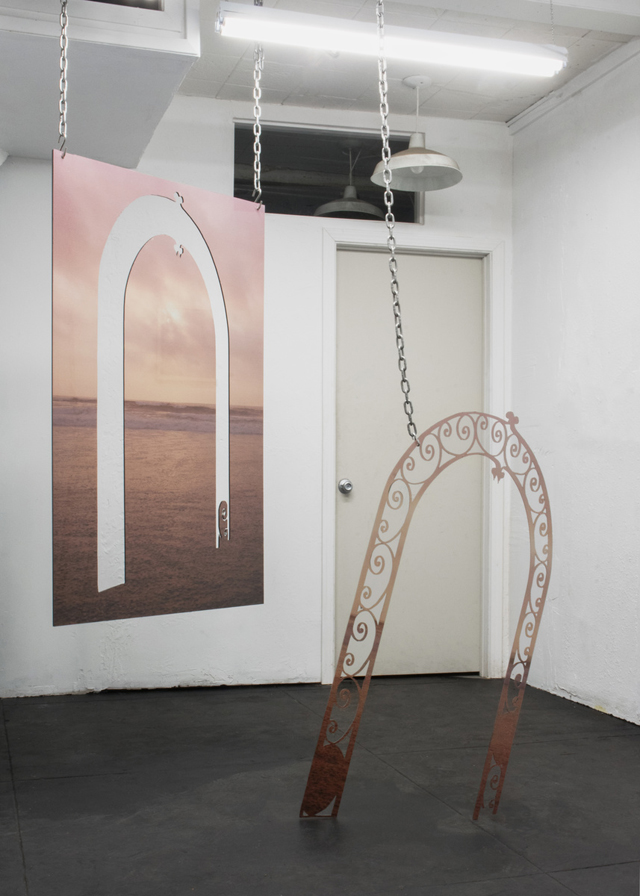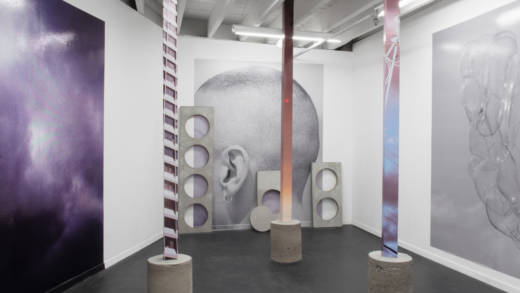In a derelict and nondescript warehouse off 16th and South Van Ness, Hit Gallery occasionally announces itself by propping open a heavy metal door. From there, a foyer leads to stairs and the main gallery, run by artists Marissa Leitman, Peter Hurley, Brittany Newell and Silk Worm since February of this year.
If you happen to catch the gallery on a propped-door day (or make an appointment to visit), you’ll currently step into Performance Anxiety, a collaborative show by Ryan Molnar and Jack Bool, San Francisco and Oakland-based artists, respectively, working in photography and installation.

Through an interdisciplinary approach, the duo examine the stratification of our online and offline identities, and the mechanisms by which our cyber and material environments distinguish a sense of place. Their work probes the boundaries and grievances of digitality, a term derived from Nicholas Negroponte’s 1995 book Being Digital. It is the condition of living (partially or mostly) in a world that’s navigated on screen. In digitality, while our sense of self remains informed by our material and tangible surroundings, it’s also shaped by ephemeral qualities—fleeting images, impalpable relationships and an onslaught of universally available information.
The first image encountered in Performance Anxiety is Bool’s Sun at 50 Percent Opacity, a sunset printed on perforated vinyl adhered to acrylic, the center of which has been punctured by the laser-cut shape of a wrought-iron security grill—the decorative barriers placed over ground-level windows. The pastels of the sunset (the most democratic form of beauty) juxtapose against the weaponization of our architectural surroundings. Like the rock gardens under freeways that keep unhoused communities from sleeping there, this object references the resounding ethos of the Bay’s current demography—the notion that only those who can afford this place have the right to be here.
Adjacent to this piece is Molnar’s Sunburn—another sunset image, this one veiled by a grid of burn marks incised with a magnifying glass. Hauntingly, perhaps fittingly, Performance Anxiety opened on Nov. 16, a day when San Francisco’s air-quality index placed it among the most polluted cities in the world; gallery attendees arrived in face masks. The timing created a shared resonance between the truncated beauty of the artists’ sunsets and the heightened sense of our real-life environmental degradation.



